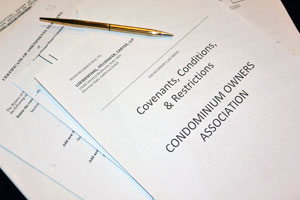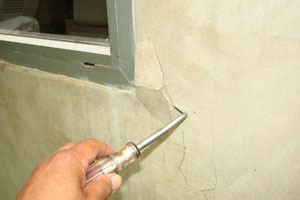LHC NEWSLETTER, VOL. 12, NO. 1
How to Deal With Recalls/Board Removal in Light of Election Rule Requirements
By: David A. Loewenthal, Esq.
Loewenthal, Hillshafer & Carter, LLP
We all remember the good old days when conducting a recall of one or more members of the Board of Directors was complicated enough, but still coexisted with the election of a new Board of Directors if the recall was successful. The timeframes in the Corporations Code and Governing Documents to conduct a Board recall and those required to conduct an election of a new Board, if the recall was successful, were compatible and did not give rise to issues of timing or possible mistiming. However, with the significant modifications to the election requirements beginning January 1, 2020, including Civil Code section 5105 et seq., the issue of timing and compatibility of a concurrent recall of a Board of Directors and election of a new Board of Directors, became confusing and in debate.
There does not appear to be a consensus in our industry as to how to make compatible a recall of the Board of Directors and the election of a new Board so as to avoid the risk that a recall is successful and the election of a replacement board is not delayed for some extended period of time to meet election law timing requirements.
The problem is that pursuant to the Corporations Code a recall is to be conducted within ninety (90) days of receipt of a proper petition. However, under the new elections laws the election of a new Board of Directors, requires a minimum of ninety (90) days to complete and realistically takes approximately 100 to 110 days to complete due to logistics of mailing and compliance with law. .
Under most governing documents and the Corporations code, a recall process is supposed to commence when a petition, signed by a minimum of five percent (5%) of the membership, has been presented to the Board of Directors.
Specifically, Corporations Code section 7510 states in part as follows:
“(e) Special meetings of members for any lawful purpose may be called by the board, the chairman of the board, the president, or such other persons, if any, as are specified in the bylaws. In addition, special meetings of members for any lawful purpose may be called by five percent (5%) percent or more of the members.”
For the recall to be valid, the petition must be provided to the Board so that the Board can take proper action on the petition. California law does not provide for an individual owner to initiate a recall and unilaterally conduct an election outside of the statutory procedures.
Assuming that a proper petition signed by five percent (5%) or more of the members of the Association is provided then, pursuant to Corporations Code section 7511, the following will apply:
“(c) Upon request in writing to the corporation addressed to the attention of the chairman of the board, president, vice president, or secretary by any person (other than the board) entitled to call a special meeting of members, the officer forthwith shall cause notice to be given to the members entitled to vote that a meeting will be held at a time fixed by the board not less than 35, nor more than 90 days after the receipt of the request. If the notice is not given within 20 days after receipt of the request, the persons entitled to call the meeting may give the notice or the superior court of the proper county shall summarily order the giving of the notice, after notice to the corporation giving it an opportunity to be heard. The court may issue such orders as may be appropriate, including, without limitation, orders designating the time and place of the meeting, the record date for determination of members entitled to vote, and the form of notice.”
In addition to the Corporations Code, the Association’s governing documents, including the Bylaws, often will have provisions regarding the recall process that mimic the Corporations code as to the process and timing.
Based on the Corporations Code, the process of a recall is administered by the sitting Board of Directors once a proper petition has been provided. This includes, but is not limited to, having the Board meet within twenty (20) days of receipt of the petition to schedule and notice the recall special meeting; appointment of inspector(s) of election; and generally ensuring that the process proceeds forward properly. The conundrum is that the Corporations Code specifically requires that the recall process must be completed within 90 days of receipt of a valid petition. However, we know that electing a new Board of Directors and the processes set forth within Civil Code section 5115 et seq. takes a minimum of 90 days, but generally longer for the reasons set forth above. Thus, the issue of conflicting or incompatibility of statutes.
Civil Code section 5115 pertaining to voting procedures provides the timeline of when certain actions and conduct for an election is to take place. This provision includes, but is not limited to, the following:
“(a) An association shall provide general notice of the procedure and deadline for submitting a nomination at least 30 days before any deadline for submitting a nomination.…
(b) An association shall provide general notice of all of the following at least 30 days before the ballots are distributed:
(1) The date and time by which, and the physical address where, ballots are to be returned by mail or handed to the inspector or inspectors of elections.
(2) The date, time, and location of the meeting at which ballots will be counted.
(3) The list of all candidates names that will appear on the ballot…
(c) Ballots and two preaddressed envelopes with instructions on how to return ballots shall be mailed by first class mail or delivered by the association to every member not less than 30 days prior to the deadline for voting.…
(d) A quorum shall be required only if so stated in the governing documents or other provisions of law. If a quorum is required by the governing documents, each ballot received by the inspector of elections shall be treated as a member present at a meeting for purposes of establishing a quorum…”
To realistically complete all the above requirements, an election of a Board of Directors takes a minimum of ninety (90) days and generally 100 to 110 days, which means that the 90 day timeframe in the corporations code will not be complied with.
As such, how do we merge the Corporations Code requirement that the recall be conducted within ninety (90) days of receipt of the petition with the minimum ninety (90) day timeline set forth within Civil Code section 5115?
The following is a general summary of various options that have been discussed and used in the industry.
Option 1: Conduct the recall election and only if successful commence the process to elect a new Board of Directors.
This option takes the position that the Association conduct the recall meeting first to completion and only if the recall is successful that the Association then commence the process of electing a new Board of Directors. The rationale behind this process/option is that this allows both the Corporations Code requirement that the election be conducted within ninety (90) days of receipt of the petition to be satisfied and also allows the ninety (90) plus day minimum time frame (Civil Code section 5115) to conduct a new election to also be satisfied. Though both statements are factually accurate, the drawback of this option is that if the recall is successful the recalled Board will remain in power for a minimum of ninety (90) plus days. As such, a recalled Board will still be conducting meetings, ostensibly entering into contracts and taking other action even though the membership has voted to recall the Board. Thus, a recalled/lame-duck Board remains in power which would likely not be in the best interest of the Association.
In addition, not only is there the minimum time frame of ninety (90) plus days to conduct the election of a new Board as required by Civil Code section 5115 et seq., but quorum would also have to be met for the Board election meeting. If quorum is not met for the new Board election, the recalled Board would remain in power and control of the Association for some indefinite period of time.
Again, though this is a possible option, we believe that having an extended time period where a recalled Board remains in power is not beneficial to the Association nor following the will (vote) of the membership. We also believe that such a process is inconsistent with the policy intent represented by the new election law mandate effective in 2020.
Option 2: Commence the time period for the recall and election of a new Board simultaneously but adhere to each individual timeline.
Under this process, once a valid petition for recall is received by the Board, the Board meets within twenty (20) days of receipt of the petition and notices the recall meeting so as to be conducted within ninety (90) days. In addition, the process to elect a new Board, including its time parameters, if the recall is in fact successful, also commences. However, since the election of a Board takes a minimum of ninety (90) days, the Board election will likely trail behind the recall meeting anywhere from approximately 10 to 30 days.
Again, the benefit of this process would be that both the Corporations Code time frame of conducting the recall within ninety (90) days is met/satisfied as would be the minimum ninety (90) day time frame to elect a new Board of Directors.
Unfortunately, as is true with Option 1, if the recall is successful there still remains in control a Board of Directors that has been recalled by the membership for some period of time. Also the meeting for election of a new Board would still require quorum and, if quorum is not met, the recalled Board would continue to remain in control for some indefinite period of time. Again we believe that this scenario is inconsistent with the policy underlying the new election laws.
Option 3: Conduct the recall meeting and election of a new Board of Directors in compliance with Civil Code section 5115 timeline.
In this process, which we believe is the most appropriate based on the unequivocal reading of the election statute, the Board will meet within twenty (20) days of receipt of the valid recall petition for the purpose of scheduling both the recall special meeting as well as the election of a new Board of Directors, if the recall is successful. Under this process the timeline of Civil Code section 5115, i.e. a minimum of ninety (90) plus days is followed for both. The benefit of proceeding in this manner is that the recall and election of a new Board of Directors, if the recall is successful, would occur contemporaneously, i.e. one right after the other. It avoids the risks of Option 1 and 2 that a recalled Board remains in power for some extended period of time which is fraught with various issues as referenced above.
The naysayers to Option 3 may claim that the recall must be conducted within ninety (90) days pursuant to Corporations Code section 7511. However, Civil Code section 5100 deals with this dilemma as follows: “(e) In the event of a conflict between this article and the provisions of the nonprofit mutual benefit Corporation Law (part 3 (commencing with section 7110) of Division 2 of Title I of the Corporations Code) relating to elections, the provisions of this article shall prevail.”
As such, the drafters of Civil Code section 5100 knew or anticipated that there may in fact be conflicts between the election and recall statutes set forth within the Civil Code and the Corporations Code and made clear that to the extent that there are conflicts that the Civil Code would prevail. The clear purpose of this provision is to have the Civil Code control ALL Association elections, including recalls.
Based upon the above, we believe that the correct and most prudent approach in dealing with a recall and the election of a new Board of Directors, is to have the Board meet within twenty (20) days of receipt of a valid petition and set a date for both the recall special meeting and election of new Board and to conduct both actions within the timeframes required by Civil Code section 5115, a minimum of ninety (90) plus days. Again, this allows for the process to move forward expeditiously, though greater than ninety (90) days, and to ensure a seamless transition of power from a recalled Board to a newly elected Board contemporaneously. This process thereby avoids continuing issues and conflicts of a recalled Board remaining in power and in control of the Association including having the power to contract, conduct meetings, take disciplinary action, engage in litigation, expend Association resources, etc. In addition, it is unlikely that a member could establish some type of prejudice or damage for not conducting the recall within ninety (90) days, especially if it is being conducted contemporaneously with a Board election, while bifurcating the process clearly would. The legislature would not have asserted the dominance of the Civil Code over the Corporations Code if it did not intend it to be followed.
With every new statute or modification of an existing statue, problems and issues always arise. The January 2020 election statutes have created a number of problems and issues for Associations; however, we believe that the process to conduct a recall and election of a new Board can be performed relatively seamlessly.
Onward and upwards to attempting to solve other problems!


